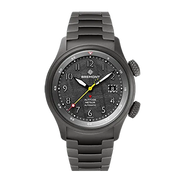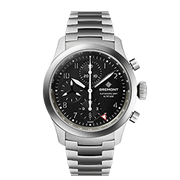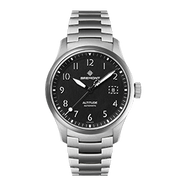Eighty two years ago today at 0630 precisely, a race to what at the time, was effectively the Moon, began as the flag dropped. The MacRobertson Air Race was set from Mildenhall in England to Melbourne Australia, the field consisted of twenty aircraft, ranging from single engined racers to passenger transporters. At the time it took almost 2 months for the average human to travel from England to Australia, in the race the fastest pilots planned to do it in a weekend. To the people reading the papers this was unfathomable, it was an event that had media coverage throughout the world. It was impossible, amazing and immensely exciting.
Representing British Aviation, was the pinnacle of aero and art deco design at the time, the sublimely beautiful de Havilland Comet. Three of this design were in the field, all flown by the best aviators that the Empire could muster. One wonders what was going through the minds of the participants, in particular the DH 88 Comet pilots.
The first Comet only flew six weeks before the race, without the knowledge of the would be winning pilots, Charles Scott and Tom Cambell-Black. In fact, Scott and Cambell-Black only took delivery of their Comet Grosvenor House (today the only flying original) on the thirteenth of October, a mere 7 days before their departure. Scott in his book confessed, "to a nervous anxiety in contemplation of the first test flight. A crash no matter how trivial, would eliminate the Comet from the race, because there would be no time for repairs before we were due at Mildenhall”. After the test flight they flew the Comet to Mildenhall. In the next week they managed 7 landings before their departure for Melbourne.
So two gentlemen pilots departing in a brand new experimental aircraft, with difficult handling characteristics at a maximum weight which had not been tested until the flag fell at 0630 on the twentieth of October 1934. What would be uppermost on their minds? Scotty sums up the matter, “The week at Mildenhall, as an experience, was worse than the flight itself”. The deep set fear of failure, be it mechanical, skill based or even more disastrously failure of the men of 1934, would have weighed heavily.
The Comet really was not ready; there had been reliability problems with the engines, the aircraft as a whole was tremendously fast, but the systems were untested and more importantly if the aircraft did not breakdown, it was difficult to land on a long smooth runway. What would it be like at night, with a poor surface and a short landing run all at weights yet to be tested? While trying to resolve all the difficulties with the technology, administration and paperwork would have been equally troubling. The bureaucrats would be having a field day requiring numerous certificates, overflight permissions and inspections. Finally, there is the small matter of cost. £10,000 was up for the speed prize- a life defining sum of money for the winners, but if second or third, or worse a failure to finish, there was also a huge amount to lose, without even considering the aeroplane and losing the prize. A life defining loss, a huge gamble on unproven technology, the unknown and all with the world media watching.
Aircraft, financial, bureaucratic and human failings aside, navigation would have been a most major concern. The fear of being lost over hostile terrain, short of fuel with nowhere to land safely would be an incessant concern. They would fly literally over areas of uncharted terrain, no one could come to the rescue if the worst happened. Maps would be procured from the AA, a track line would be drawn, a course would be flown and adjusted for the prevailing wind conditions. All this would rely on the most accurate timepieces to allow a prediction of an arrival time. Not only would local time be handy, but also a Greenwich Mean Time (GMT) function and a good stopwatch would be essential for maintaining a progress plan on performance against the prevailing wind, which again could be ascertained by referring to the timepiece. The “Clock” could then be used to confirm the aeroplane position over the ground. Without the benefit of seeing any ground features such as when you're in cloud or at night over the ocean or barren terrain, all you can do is fly a compass heading and wait for the predicted time on the clock to give you an estimated position or an Estimated Time of Arrival.

Many people believe that a compass is how aircraft were navigated in 1934 and to a certain extent they would be right, but an accurate chronometer is equally essential for the type of navigation that would be required in this race. Scott and Cambell Black would have had a chronometer each and the aeroplane probably had one in each cockpit. This would allow different time references to be run and cross checked against each other to ascertain performance, position, and fuel burn. A good chronometer is essential for flying and of the many things the pilots would be checking would have been that their chronometers were accurate and serviceable, for the “Clock” would be their last resort with the compass to find where they were over the planet.
I doubt Scott and Cambell-Black had any sleep on the night of the 19th and 20th of October 1934. Based on my experience, the best they could have done is try to relax and stare at the ceiling while their minds considered the myriad of problems that they would have to face, I have not mentioned weather; I am sure that they would have been thinking about Monsoons and ice as they constantly watched their ticking chronometers.
When the flag fell most of the pre-show worries would magically disappear as they concentrated on the huge work required to get a Comet from one side of the planet to the other and to win.
Written by Steve Noujaim, British Aviator, Fighter Pilot & Aerobatic Instructor
CELEBRATING THE WORLDS GREATEST AIR RACE
The Bremont 2016 Limited Edition celebrates the astonishing de Havilland DH-88 Comet, Grosvenor House, the aircraft that captured the world’s imagination with this phenomenal record-breaking flight in 1934.
The Bremont DH-88 chronometer, is a special, Limited Edition timepiece handcrafted at our workshops in England and incorporates original spruce plywood from the undercarriage assembly of this winning aircraft. There will be 282 produced in stainless steel and 82 in rose gold.
ABOUT STEVE NOUJAIM
Steve Noujaim, a former fighter pilot and aerobatic instructor, set a new world record in September 2010 for a solo flight from London to Cape Town and return to London in a 200hp single-engine propeller aircraft built-in a garage at home - accomplished in 3 days. 11 hours and 16 minutes. Steve undertook this high-risk project to achieve a personal ambition. But even with meticulous planning and preparation, Steve had to draw on his reserves of specialist training and honed skills to help him overcome the fear he experienced during the intrepid task he had set himself.
This remarkable man achieved aviation history when he was awarded the highest honour of the Britannia Trophy 2010 bestowed by the Royal Aero Club for ‘the British aviator accomplishing the most meritorious performance in aviation during the previous year.















